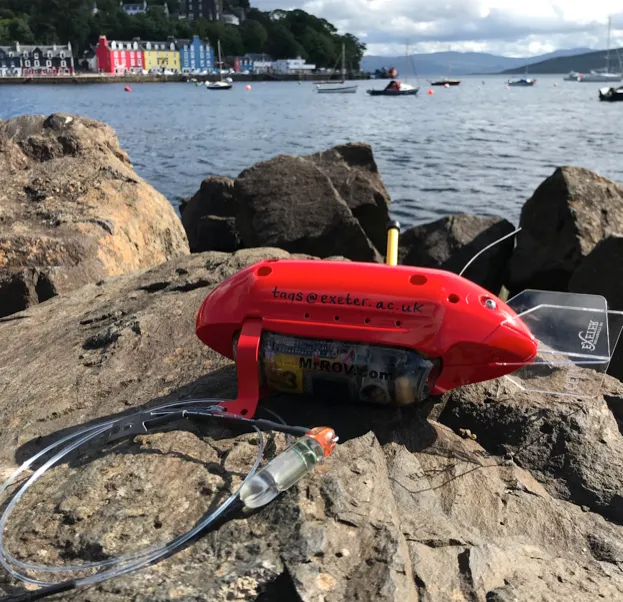Despite being the second largest living fish in the world (they can reach up to 10m in length) and a regular visitor to British waters, the basking shark remains a mysterious creature to scientists.
Researchers from University of Exeter and Scottish Natural Heritage (SNH) tagged three basking sharks off the coast of Tobermory (Isle of Mull, Scotland) in early August with towed camera tags.
This is the first time that these tags have been used on this species, and video footage collected is already providing interesting data to study.
Watch the video:
The footage shows sharks aggregating near the seabed, which could potentially be the formation of social groups, and three sharks close together hardly swimming and with their fins touching.
“There’s very little information about social and mating behaviours in basking sharks, or indeed sharks in general,” says Dr Suzanne Henderson, policy and advice officer at SNH.
“We’ve been unsure whether the surface behaviours we see in the Sea of the Hebrides – such as parallel swimming, following nose to tail, or swimming in tight circles – are courtship activities."


The tag used in this experiment involves a camera trailing slightly behind the attachment point at the base of the dorsal fin, and gives the scientists a shark’s eye view of the environment.
After a set amount of time, the tags detach and are then tracked down by the scientists using the cameras' satellite tracking beacons.

These types of tags have previously been used on manta rays, while suction cup attachments are fairly standard for whales and turtles, and fin flip attachments for sharks that can be handled on a boat have also been used.
Alongside providing insights into shark behaviour, the collected data can be used for conservation purposes.
A basking shark Marine Protected Area proposal is being consulted on later this year, and the data will be used in identifying why the area is important to the sharks.

“The basking shark is a protected species in Scotland, across the UK and in the coastal and offshore waters of many northeast Atlantic countries,” said Dr Lucy Hawkes, senior lecturer in physiological ecology at the University of Exeter. “But as yet we don’t know how human activity might inadvertently affect their behaviour, including mating.”
“It’s also possible that future footage we collect will record basking sharks mating, to our knowledge this would be the first recording of these fish mating.”
This was the first year of trying out these tags on the basking sharks. The scientists are planning to return to Mull next year to acquire more footage of the sharks.
